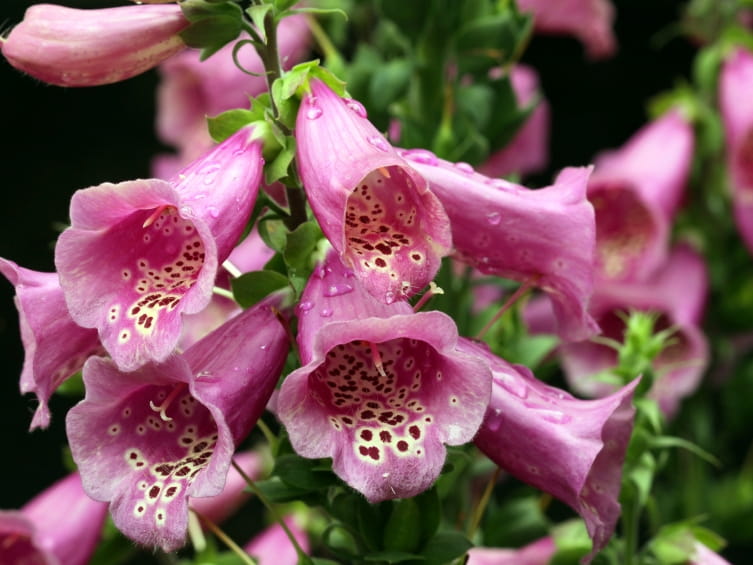True Stories for Springtime Avoiding Poisons and Outdoor Hazards

The Bottom Line
In the woods or in the garden, nature can surprise the unprepared.

The Full Story
On a hike with his family, a ten-year-old sat down on a log. He didn't look first. Oops – a snake bite in a most unexpected place…
On a pleasant early spring day, a woman pulled on her gardening gloves. Oops again – a spider had taken up residence in one of the fingers…
A young man pulled some wild carrots to cook in his stew. After he developed seizures, someone identified the "carrots" as hemlock…
In the woods or in the garden, nature can surprise the unprepared. Here are a few safety tips for hikers and gardeners.
- A warm sunny day will lure critters from their dens. At home or in the woods, be aware that snakes might be taking a sun bath. There are poisonous snakes in most of the country: rattlesnakes, copperheads, cottonmouths, and/or coral snakes. These snakes would prefer to leave you alone, but they will defend themselves if threatened.
- When hiking or climbing, LOOK before placing your feet or hands (or, of course, sitting on a log).
- If you know you'll be walking in snake habitat, be sure to wear long, loose pants tucked inside your boots.
- If bitten, do NOT use old home remedies. That means no incisions, no suction, no electrical charges, no tourniquets. Instead, pull out your phone, call Poison Control, and get to your car.
- Spiders usually look for dark spaces. Gardening gloves, gardening boots and clogs, apron pockets and tool cases are perfect for spiders, especially if they haven't been used all winter. Black widow spiders and brown recluse spiders can bite and cause an uncomfortable reaction.
- Turn gloves, boots, and clogs over and shake them out before putting them on.
- If you are bitten by a spider, wash the area well and call Poison Control.
- Do NOT eat plants that you cannot positively identify. This is true all year round, even in the spring time when we think not much is growing yet.
- Adults can be fooled with look-alike plants. Children will eat anything in sight. And poison ivy can cause a rash - even if you don't recognize the vine without its leaves.
- People can be confused at any age. A child poured water from a vase of daffodils all over his breakfast. A confused older woman drank water from a vase of lily-of-the-valley.
- If anyone bites or eats or chews a plant, call Poison Control right away.
Poison specialists will help you with a bite, sting, or plant poisoning. Call the 24-hour number: 1-800-222-1222.
Rose Ann Gould Soloway, RN, BSN, MSEd, DABAT emerita
Clinical Toxicologist
Prevention Tips
- When hiking or climbing, LOOK before placing your feet or hands (or, of course, sitting on a log).
- If you know you'll be walking in snake habitat, be sure to wear long, loose pants tucked inside your boots.
- Turn gloves, boots, and clogs over and shake them out before putting them on.
- Do NOT eat plants that you cannot positively identify.
This Really Happened
Case 1: A 19-year-old man stepped on a snake while hiking in the Virginia mountains. He called emergency medical services; the paramedic called Poison Control from the scene. The patient had 2 fang marks on his ankle with mild swelling and severe pain. The paramedic emailed a photo of the snake to Poison Control, who advised him that the snake appeared to be a copperhead. Poison Control recommended that the patient receive CroFab® (an antivenom) as soon as he arrived in the emergency room. The patient received CroFab® and was given a tetanus shot and narcotic pain medication. About 21-hours after the snake bite, despite continuing treatment with CroFab®, the patient had swelling to his mid-thigh on the affected leg. Poison Control recommended a second course of maintenance antivenom was given. The patient spent two days in the hospital.
Case 2: A 40-year-old man picked, cooked and ate a few wild onions. An hour later he started vomiting and developed a headache. He called Poison Control and was advised that wild onion is a gastrointestinal irritant but in small amounts should not cause serious poisoning. Poison Control advised him to drink fluids but, if he couldn't stop vomiting, to go to the nearest emergency room. The patient continued to vomit for a few hours but decided not to go to the emergency room. The next day, during a follow-up call from Poison Control, he said that he felt better.
For More Information
Snakebites in March? (The Poison Post®)
Poisonous and non-poisonous plants: An illustrated list
Azaleas and Rhododendrons (The Poison Post®)
Foxglove: Toxic to the Heart (The Poison Post®)
Prevention Tips
- When hiking or climbing, LOOK before placing your feet or hands (or, of course, sitting on a log).
- If you know you'll be walking in snake habitat, be sure to wear long, loose pants tucked inside your boots.
- Turn gloves, boots, and clogs over and shake them out before putting them on.
- Do NOT eat plants that you cannot positively identify.
This Really Happened
Case 1: A 19-year-old man stepped on a snake while hiking in the Virginia mountains. He called emergency medical services; the paramedic called Poison Control from the scene. The patient had 2 fang marks on his ankle with mild swelling and severe pain. The paramedic emailed a photo of the snake to Poison Control, who advised him that the snake appeared to be a copperhead. Poison Control recommended that the patient receive CroFab® (an antivenom) as soon as he arrived in the emergency room. The patient received CroFab® and was given a tetanus shot and narcotic pain medication. About 21-hours after the snake bite, despite continuing treatment with CroFab®, the patient had swelling to his mid-thigh on the affected leg. Poison Control recommended a second course of maintenance antivenom was given. The patient spent two days in the hospital.
Case 2: A 40-year-old man picked, cooked and ate a few wild onions. An hour later he started vomiting and developed a headache. He called Poison Control and was advised that wild onion is a gastrointestinal irritant but in small amounts should not cause serious poisoning. Poison Control advised him to drink fluids but, if he couldn't stop vomiting, to go to the nearest emergency room. The patient continued to vomit for a few hours but decided not to go to the emergency room. The next day, during a follow-up call from Poison Control, he said that he felt better.
